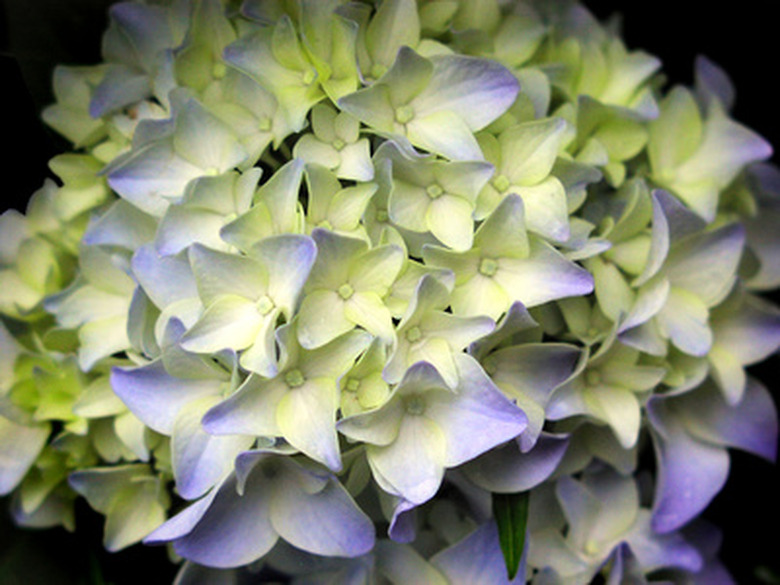How To Grow Hydrangeas In Containers
Things Needed
- Planter pots
- Bark-based potting mix
- Watering can or hose
- Controlled-release fertilizer
- Pruning shears
Many different species and cultivated varieties of hydrangeas exist, but a few are best adapted for growing in containers. Annabelle hydrangeas (Hydrangea arborescens), oak leaf hydrangeas (H. quercifolia), big-leaf, French or florist hydrangeas or hortensias (H. macrophylla) and PG or PeeGee's hydrangeas (H. paniculata) are the best types for container growing. Hydrangeas are beloved for their showy, large flowers that typically bloom in shades of white or pink from summer through fall. Container-grown hydrangeas usually stay compact and grow 3 to 4 feet tall and wide.
Step 1
Pot your hydrangeas in a container that's about 1 1/2 times the diameter of the plant's roots and that has drainage holes in the bottom. Plant the hydrangea at the same depth as it was planted in the nursery container and in a very well-draining, bark-based potting mix.
Step 2
Place your container-grown hydrangeas in full, direct to partial sunlight, such as beside a south-, east- or west-facing window. Hydrangeas can grow well in a spot that receives full sunlight in the morning and some shade in the afternoon.
- Many different species and cultivated varieties of hydrangeas exist, but a few are best adapted for growing in containers.
- Hydrangeas are beloved for their showy, large flowers that typically bloom in shades of white or pink from summer through fall.
Step 3
Water your potted hydrangeas evenly and thoroughly when the top layer of potting soil begins to feel dry to the touch. Keep the potting soil moderately moistened, but not waterlogged or saturated. When you water the hydrangeas, pour water into the pot until it begins to drain from the bottom.
Step 4
Feed your hydrangeas once each year in spring with a controlled-release fertilizer made for flowering plants and shrubs. Follow the application and dosage instructions on the fertilizer label.
Step 5
Prune your potted hydrangeas to shape them and thin out crowded growth while they're actively growing. Cut away all stems that have already produced flowers. Perform heavier pruning in early spring when the leaf buds are just beginning to form, removing all dead, damaged, diseased and crossing branches.
- Water your potted hydrangeas evenly and thoroughly when the top layer of potting soil begins to feel dry to the touch.
Tip
If you're pruning to shape the container hydrangea, make your trimming cuts just above a healthy bud or shoot. Repot the hydrangeas once every two to three years, when their roots begin to crowd the container. Transfer the hydrangea to a container that's the next size up or 1 to 2 inches wider and deeper than the previous pot.
Warning
Watch out for signs of overwatering, overfertilizing, and too much or too little sunlight exposure. If hydrangeas begin to wilt and the roots feel soft and rotted, you're overwatering the plants. If the hydrangeas become leggy and fail to bloom, they're not receiving enough light.
